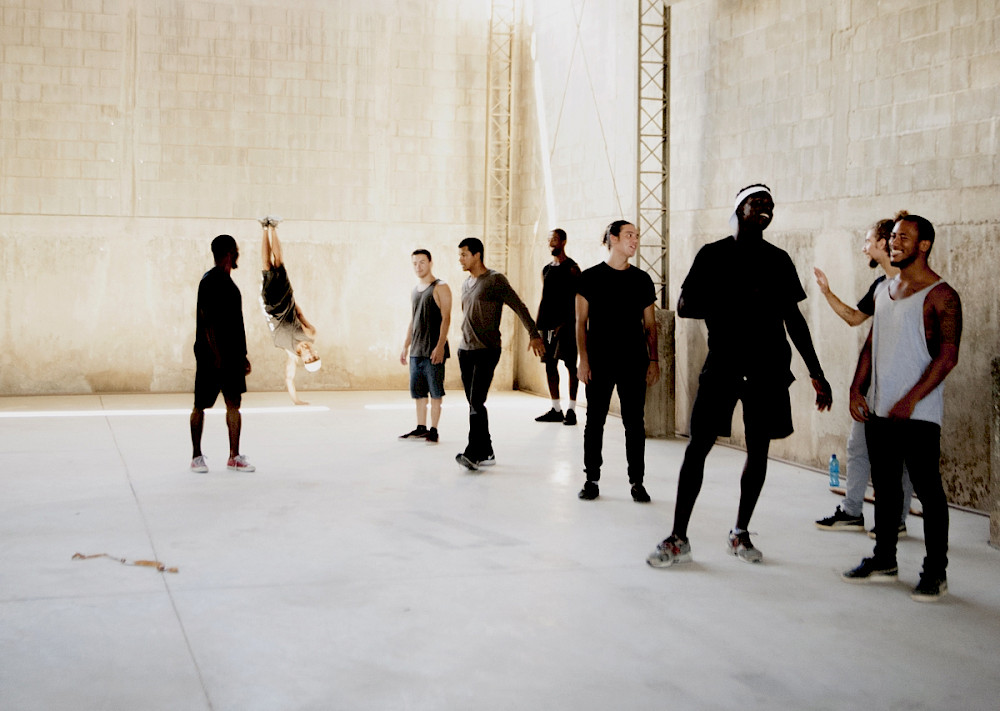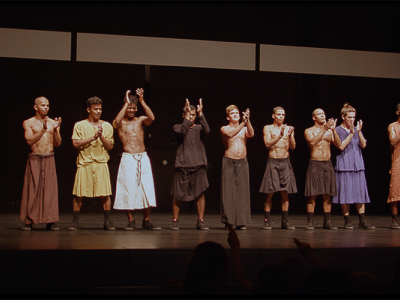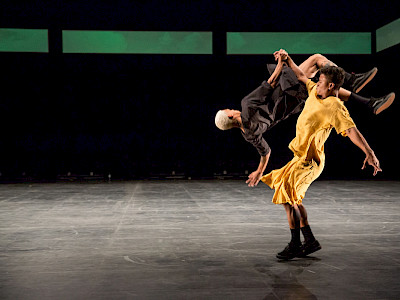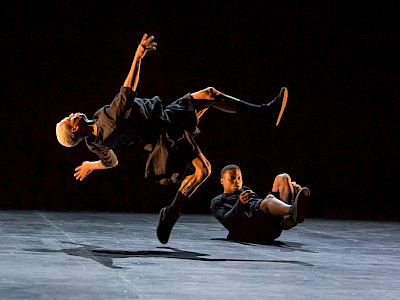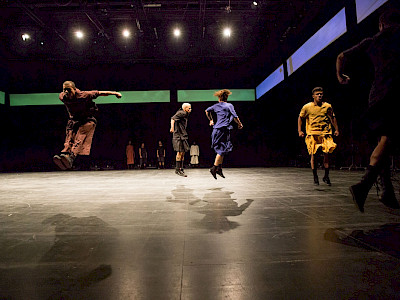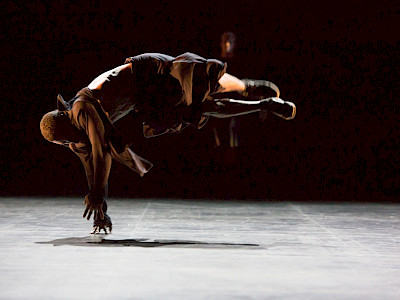07 — 11.05.2018
Le haut d’une tête s’ancre dans le sol, une course en avant se déroule en arrière, l’axe vertical d’un buste s’étend horizontalement. Dans l’oeuvre de Bruno Beltrão, les inversions ou les détournements qui s’appliquent aux corps sur scène sont peut-être aussi des façons de déjouer les formes de normalisation qui dominent nos systèmes de pensée. Régulièrement présentée au Kunstenfestivaldesarts, cette oeuvre compte parmi les expériences les plus rafraîchissantes apparues ces quinze dernières années dans le champ chorégraphique. Elle se caractérise par une déconstruction subtile et passionnante des codes de la danse hip-hop que l’artiste n’a de cesse d’enrichir et de questionner. Dans INOAH, sa dernière création, dix danseurs déploient une fascinante composition chorégraphique faite de rapprochements et d’éclatements dans l’espace, de douceur et de menace. INOAH, au-delà de son époustouflante virtuosité, traduit les ambivalences propres aux relations entre individus.
Bruno Beltrão, in conversation with Ewoud Ceulemans (De Morgen)
noah is a piece that continues to try to answer old issues important to us: how to dance together from an egocentric vocabulary, how this vocabulary can create other spaces; if there is room for subtlety in urban dances. (…)
Inoã is a neighbourhood of Marica, near the city of Niteroi. We tried to find a large space in Niterói, but it was not possible to rent it. Then we found this beautiful space in Inoã, forty minutes from Rio de Janeiro. Inoa comes from the TUPI indigenous language and there are two main meanings: “high grass”, “high field”. And the other is abbreviation of NoNã, which means to taper, because it is a region that narrows when it comes across a very beautiful group of mountains of the region called Serra da Tiririca. (…)
We stayed in this shed in Inoã for six months, and this space was all closed with except for these windows, where we could see a piece of a house, a mountain in the background with a telephone antenna, and tangled poles and wires on the other side. An insistent image that ended up persisting, or continued to follow us. I believe these windows are the index of a discomfort. Something that seems to be there to ask us how our dance communicates with the world. In practice we all know that there is no creation from scratch and any work is the fruit of the relationship between body and environment. But it seems that we insist on it because it induces us to ask frequently what difference our dance makes to the world. I do not regard these time passage as a metaphor for our political crisis. Or are they…
De
Bruno Beltrão
Avec
Bruno Duarte, Cleidson De Almeida ‘Kley’, Douglas Santos, Igor Martins, Joao Chataignier, Leandro Gomes, Leonardo Laureano, Linaldo Pantoja ‘Dhuk’, Ronielson Araujo ‘Kapu’, Sid Yon
Lumières
Renato Machado
Costumes
Marcelo Sommer
Musique
Felipe Storino
Assistant mise en scène
Ugo Alexandre Neves
Présentation
Kunstenfestivaldesarts, Zinnema
Coproduction
Kampnagel, Festival de Marseille, Wiener Festwochen, Künstlerhaus Mousonturm Frankfurt am Main, Tanzhaus NRW
Avec le soutien de
BEIRA
